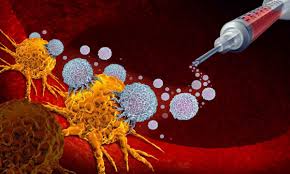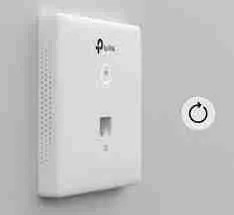Dealing with Sports Injuries in Hong Kong: How Physiotherapy Can Help
Sports injuries are an unfortunate reality for athletes and active individuals alike. Whether you’re a seasoned professional or someone who enjoys jogging on weekends, the risk of injury is always present. In Hong Kong, with its bustling lifestyle and a growing focus on health and fitness, sports-related injuries are becoming more common. If you’ve ever experienced a sports injury, you know how frustrating it can be. The good news is, physiotherapy can help you recover and get back to doing what you love. Let’s explore how physiotherapy can aid in treating sports injuries and why it’s a popular solution in Hong Kong.
Common Sports Injuries in Hong Kong
In Hong Kong, many people lead active lifestyles, from participating in weekend rugby games to cycling or training at local gyms. With this active culture comes a wide range of sports injuries. Some of the most common include:
- Sprains and Strains: These are injuries to ligaments (sprains) or muscles and tendons (strains). They are often caused by overexertion or sudden movements during exercise or sports activities.
- Tendonitis: Tendonitis occurs when a tendon becomes inflamed, often from repetitive use of a joint. It is common among athletes who perform the same movements repeatedly, like tennis players or runners.
- Fractures and Dislocations: Serious injuries like broken bones or dislocated joints can happen during high-impact sports, such as basketball, rugby, or even cycling accidents.
- Knee and Ankle Injuries: The knees and ankles are particularly vulnerable during sports activities, especially in high-intensity sports. Injuries like ACL tears or sprained ankles are common.
- Back and Neck Injuries: Poor posture or improper lifting techniques during sports or fitness training can strain the muscles in your back and neck.
In Hong Kong, the busy urban lifestyle often leads to a higher risk of injury, especially as more people engage in after-work fitness regimes and weekend sports. Fortunately, physiotherapy offers an effective solution to treat, manage, and recover from these injuries.
How Physiotherapy Helps with Sports Injuries
Physiotherapy is an effective treatment for sports injuries, aiming not only to alleviate pain but also to restore function and mobility. Physiotherapists in Hong Kong are highly trained professionals who use a variety of techniques to help patients recover and prevent future injuries. If you want to more information about health then you can visit here.
Here’s how physiotherapy can help with sports injuries:
1. Pain Management
One of the first things physiotherapists do when treating a sports injury is to manage pain. Acute pain from an injury can be debilitating, making it difficult to move or perform daily activities. Physiotherapists use a combination of methods to reduce pain, including:
- Ice Therapy: Applying ice to reduce swelling and numb the area.
- Heat Therapy: Using heat to increase blood flow and relax muscles.
- Electrotherapy: Techniques like TENS (Transcutaneous Electrical Nerve Stimulation) that use electrical impulses to reduce pain and promote healing.
2. Improving Range of Motion
After an injury, your range of motion may be restricted due to swelling, stiffness, or muscle weakness. Physiotherapists use specific exercises and techniques to improve flexibility and mobility in the injured area. This might include gentle stretching, joint mobilization, or soft tissue manipulation to help restore normal movement patterns.
3. Rehabilitation Exercises
Once pain is under control, physiotherapy focuses on rehabilitation exercises. These exercises are designed to strengthen muscles, restore joint stability, and improve coordination. Rehabilitation exercises may include:
- Strengthening Exercises: To rebuild muscle strength around the injured area.
- Proprioceptive Training: To help with balance and coordination, especially for ankle and knee injuries.
- Sport-Specific Exercises: Tailored exercises to mimic the movements required in your sport, helping you get back to your specific athletic goals.
The goal of these exercises is to not only aid recovery but also to prevent the injury from reoccurring by addressing underlying weaknesses or imbalances in your body.
4. Injury Prevention
Physiotherapists in Hong Kong focus not just on healing but also on injury prevention. If you’re someone who enjoys sports or works out regularly, it’s important to address risk factors before they lead to injury. Physiotherapists will assess your movement patterns, posture, and flexibility, looking for potential issues that could cause injury in the future.
They may offer advice on:
- Warm-up and Cool-down Routines: Proper warm-up and cool-down exercises can significantly reduce the risk of injury.
- Posture and Alignment: Correcting your posture during sports and daily activities to prevent strain on muscles and joints.
- Footwear and Equipment: Ensuring that your footwear is appropriate for your sport or activity and that you’re using the right equipment.
By focusing on these preventative measures, physiotherapists help you continue your active lifestyle while reducing the likelihood of future injuries.
5. Manual Therapy
Manual therapy is a hands-on technique used by physiotherapists to relieve pain, increase mobility, and improve muscle function. It includes techniques such as:
- Massage Therapy: To reduce muscle tightness and improve blood circulation.
- Joint Mobilization: To improve joint movement and reduce stiffness.
- Soft Tissue Mobilization: To break down scar tissue and improve the function of muscles and tendons.
These techniques can be particularly effective for injuries like tendonitis, sprains, and muscle strains, providing targeted relief and promoting healing.
6. Education and Advice
Physiotherapists not only help with the physical aspect of recovery but also provide valuable education to prevent future injuries. They will guide you on how to manage your condition at home, such as:
- Self-management Strategies: How to apply ice or heat, when to rest, and how to gently stretch the injured area.
- Post-Injury Lifestyle Modifications: What adjustments you need to make in your sports routine or daily activities while you recover.
- Recovery Timeframes: Setting realistic expectations for when you can safely return to your sport without the risk of re-injury.
Physiotherapy in Hong Kong: Why It Works
In Hong Kong, physiotherapy is becoming an increasingly popular choice for sports injury recovery. Clinics like Physiotherapy Hong Kong Central offer state-of-the-art facilities and treatments that cater to the unique needs of both amateur athletes and professionals. The city’s busy pace means that people need efficient recovery methods, and physiotherapy provides just that.
Physiotherapists in Hong Kong are skilled in assessing injuries quickly, developing personalized treatment plans, and helping individuals return to their normal routines faster and safer. Whether you’re recovering from an injury or looking to prevent one, physiotherapy is a highly effective solution.
Conclusion
Sports injuries can be frustrating and painful, but with the right treatment, recovery is possible. Physiotherapy plays a crucial role in treating, rehabilitating, and preventing injuries, allowing you to get back to your active lifestyle. If you’ve been injured in a sports activity, don’t wait too long to seek help. Consult a physiotherapist in Hong Kong Central or elsewhere in the city to receive the care and support you need. With their expertise, you’ll be back on track in no time.














Post Comment